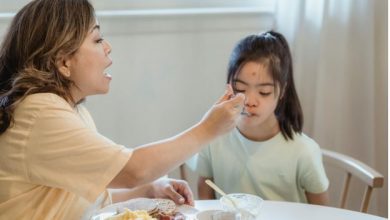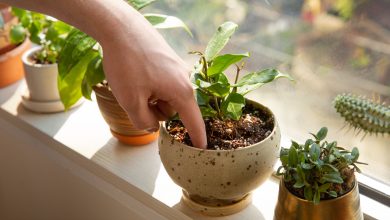How to Get Rid Of Acne
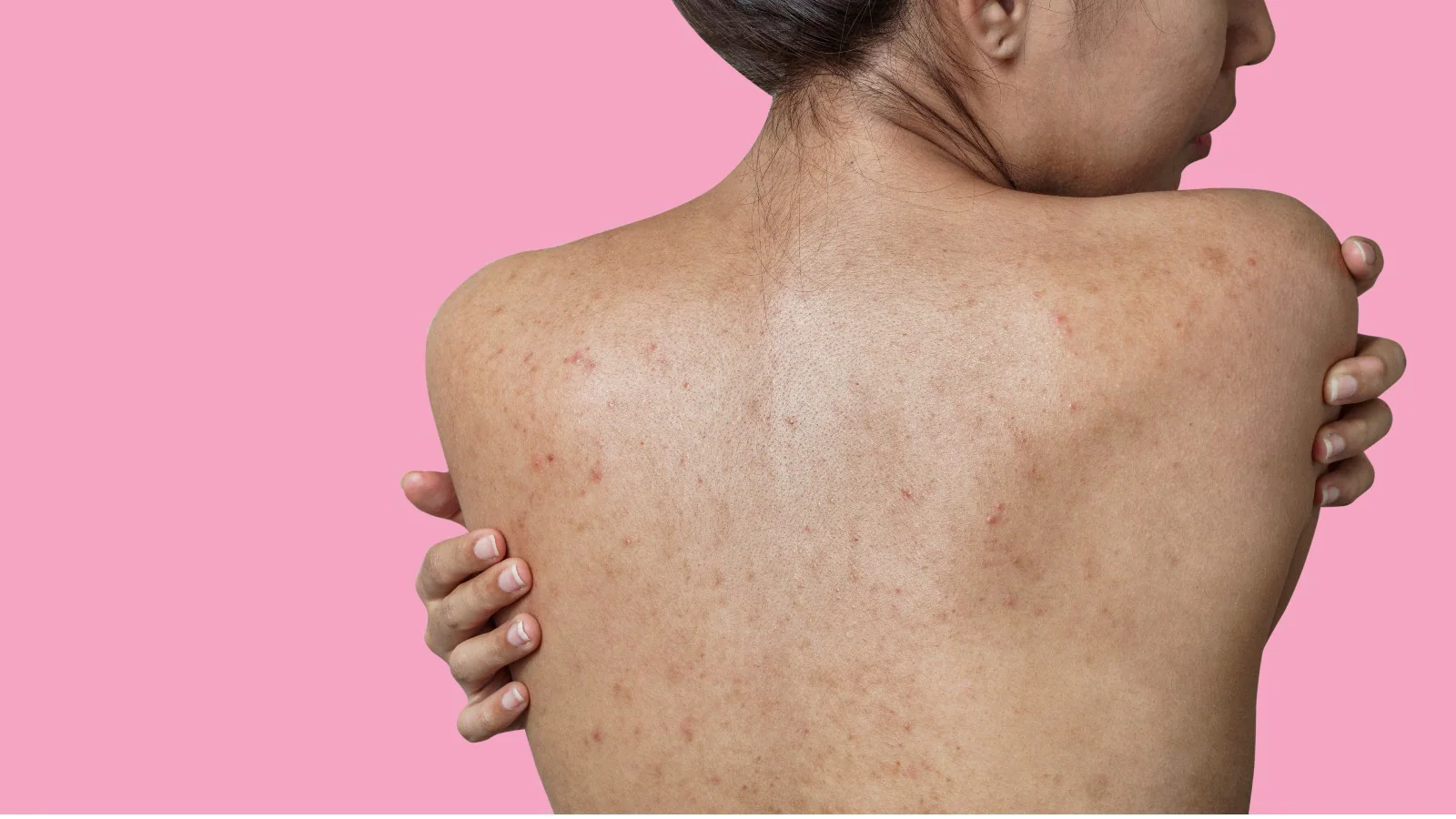
How to Get Rid Of Acne: One of the most prevalent skin disorders in the world, acne is thought to impact 85% of young adults. dependable source The most effective acne treatments currently available, such as salicylic acid, niacinamide, or benzoyl peroxide, can be pricey and have unfavorable side effects like dryness, redness, and irritation. Enough Info

This has led a lot of people to explore home remedies for acne. In fact, a 2017 study found that 77% of acne sufferers had tried non-prescription acne medications. There needs to be more research on the efficacy of many home remedies because they are not supported by science. However, if you’re looking for alternative therapies, your options remain. How to Get Rid of Body Odor(2023)
Most people experience an acne flare-up at some point, usually during adolescence when they experience puberty. whether it is brought on by stress or hormones. Contrary to popular opinion, acne doesn’t always indicate that your skin is unclean or dirty; in fact, over-cleansing can make your skin itch even more. Although hormones can be controlled, there are easy steps you may do to stop your outbreaks. You can quickly regain your skin’s youthful radiance and health.
What is acne?
When your skin follicles are clogged with oil and dead skin cells, acne develops as a skin disorder. Acne is a very common condition, and the majority of individuals have had it at some point in their lives, particularly when they were teenagers and their sebaceous glands were producing more oil.
Acne is an inflammatory condition that affects the skin’s sebaceous (oil) glands and hair follicles, which are home to fine hairs. Sebum produced by the sebaceous glands in healthy skin is released onto the skin’s surface through the pore, a follicular opening. The follicle is lined with keratinocytes, a kind of skin cell. The keratinocytes normally ascend to the skin’s surface during skin cell shedding. Hair, sebum, and keratinocytes clump together in the pore of an acne patient.
As a result, the keratinocytes are kept from shedding and sebum is kept from penetrating the skin’s surface. Inflammation, including swelling, redness, heat, and pain, is brought on by bacteria that ordinarily reside on the skin and can proliferate in clogged follicles when oil and cells are present. Lesions or pimples are produced when the wall of the clogged follicle collapses, spilling germs, skin cells, and oil onto the neighboring skin. How To Stop Snoring(Steps and requirements)
Read Also: How to Get Rid of Body Odor(2023)
Adult acne, on the other hand, has no age restrictions and is common in persons in their 40s and 50s.
What causes acne?
When your skin’s pores become blocked with oil and dead skin cells, acne develops. Each pore is associated with a sebaceous gland, which creates sebum, an oily material. Propionibacterium acnes, often known as P. acnes, can develop more rapidly when excess sebum clogs pores. P. acnes is attacked by your white blood cells, causing skin irritation and acne. Although some cases of acne are more severe than others, whiteheads, blackheads, and pimples are common signs of the condition.
Acne development may be influenced by a variety of variables, such as:
- genetics
- stress
- diet
- infections
- hormone changes
The best clinically proven methods for decreasing acne are standard treatments. You can also attempt at-home remedies, though further study is required to determine their efficacy. Here are 13 natural treatments for acne. How to Stay Fit at Home
Types of acne
Numerous different lesions, or pimples, are caused by acne. Comedones are the medical term for swollen or blocked hair follicles. A few acne types are:
Whiteheads:
are blocked hair follicles that remain below the skin’s surface and appear as a white bump.
Blackheads:
Plugged follicles that rise to the skin’s surface and break open. They are not unclean; the reason they appear black on the skin’s surface is that the air taints the sebum.
Papules:
Small, pink bumps on the skin that are inflamed lesions that can be tender to the touch.
Pustules:
Often known as pimples, are papules that are topped with white, yellow, or red lesions that are filled with pus.
Nodules:
Significant, uncomfortable solid lesions that are embedded deeply in the skin.
Extreme nodular acne:
Often known as cystic acne: pus-filled sores that are deep and painful.
This article looks at 14 well-liked home treatments for acne.
Use a cleanser with benzoyl peroxide to wash your face twice daily
One of the most efficient medications for treating acne is benzoyl peroxide. Numerous face cleansers contain it. When you get up in the morning and before going to bed at night, wash your face.
- Use a face wash with exfoliating particles if you can locate one to help your skin look smoother.
- Give your shoulders, back, and chest a twice-daily scrub with the same cleanser you use on your face if you have acne on those areas of your body.
- Never go to bed without washing off your makeup completely if you wear it. A certain method to create additional pimples and make clearing up acne much more challenging is to go to bed wearing makeup. To make sure all traces are gone, use an oil-free makeup remover before washing with your normal cleanser. How To Know If You’re Depressed :
Read Also; How To Stop Snoring(Steps and requirements)
Exfoliate your face
The act of exfoliating involves removing the outermost layer of dead skin cells. By eliminating the skin cells that obstruct pores, it might help acne. Once the top layer of skin has been removed, exfoliating may help acne treatments for the skin work better by allowing them to penetrate deeper. Exfoliation and its effectiveness in treating acne are currently the subjects of scant research.
Although there are many different exfoliating products on the market, you may also make your own scrub at home with salt or sugar.
Keep in mind that physical exfoliation might irritate the skin and even cause harm. As a result, some physicians advise using products containing salicylic or glycolic acid for moderate chemical exfoliation.
If you decide to use mechanical exfoliation, rub your skin sparingly to prevent injury.
- Combine coconut oil and sugar (or salt) in an equal amount.
- Apply the mixture gently on your skin and then thoroughly rinse.
- You can exfoliate up to once per day, as frequently as you like.
Apply green tea to your skin
Drinking green tea can help you stay healthy because it contains a lot of antioxidants. Additionally, it might lessen acne. This is probably due to the fact that green tea’s polyphenols aid in battling acne-causing germs and reducing inflammation. Research on the advantages of drinking green tea for treating acne is lacking, and more research is required. How to deal with bad news
Use oils to wash your face
This cleansing technique sometimes referred to as the Oil Cleansing Method (OCM), is well-liked in Asia and is becoming more and more popular. OCM is a different cleaning technique that is kinder to the skin and appealing to those with sensitive skin.
Look at oils like emu oil, castor oil, grapeseed oil, olive oil, egg oil, and egg oil.
Tea tree oil spot treatment
The leaves of the little Australian native tree Melaleuca alternifolia are used to make tea tree oil, an essential oil.
Acne may be lessened by applying tea tree oil to the skin.
Participants who used a tea tree oil treatment for acne reported less dry skin and irritation when compared to benzoyl peroxide. Your satisfaction with the therapy will increase.
If taken long-term, topical and oral antibiotics that increase bacterial resistance may be effectively replaced by tea tree oil.
Because tea tree oil is so strong, always dilute it before using it topically.
- 9 parts water should be added to 1 part tea tree oil.
- Apply the mixture to the troublesome regions using a cotton swab.
- Using moisturizer is optional.
- As necessary, repeat this procedure 1–2 times daily.
Use a face mask or a sheet
Face or sheet masks use ingredients that eliminate microorganisms while calming your skin. To dry out your skin and unclog your pores, apply a sheet or face mask for 15-20 minutes two to three times each week. Purchase face masks at your neighborhood drugstore or beauty supply store, or make your own at home.
- Mix cucumbers and oats together. The oatmeal softens and calms inflamed skin, while the cucumbers assist to minimize redness and fight off dark spots. Apply the paste to your skin for 15-20 minutes before rinsing it off with warm water after blending the two ingredients in a food processor until they form a paste.
Read Also: How to Stay Focused (Steps and Requirements)
Make a mask with cinnamon and honey
Honey and cinnamon bark extract worked together to kill P. acnes-causing germs. On its own, honey can prevent P. acnes growth or even eradicate it. This does not imply that using honey to treat acne is always successful.
Antibacterial soap alone is just as good in treating acne as applying honey to the skin after using it. While honey and cinnamon may lessen acne because of its anti-inflammatory and antibacterial effects.
- To make a paste, combine 1 teaspoon of cinnamon and 2 tablespoons of honey.
- After washing your face, apply the mask and leave it on for 10 to 15 minutes.
- After thoroughly rinsing the mask off, pat your face dry.
Adding zinc to a diet
Zinc is a crucial vitamin for immune system health, hormone production, cell growth, and metabolism.
Compared to other acne-related natural remedies, it has undergone a fair amount of research.
A 2021 analysis revealed that the number of inflammatory blemishes significantly decreased in individuals who received zinc treatment as opposed to those who did not.
The safe upper limit for daily zinc intake is 40 milligrams, so it’s usually advisable to stay within that level unless you’re under a doctor’s care.
Taking too much zinc might have negative effects, such as gastrointestinal discomfort.
Apply apple cider vinegar
The unfiltered juice from crushed apples, or apple cider, is fermented to produce apple cider vinegar. Apple cider vinegar has the same antibacterial and antifungal properties as other vinegar.
Citric acid is one of the organic acids found in apple cider vinegar. Combining zinc oxide and citric acid has been reported to kill P. acnes. Apple cider vinegar’s lactic acid may help acne scars look less noticeable.
There is currently no evidence to support the use of apple cider vinegar for treating acne, while some of its ingredients may be helpful in this regard. Because it could irritate the skin, some dermatologists advise avoiding using apple cider vinegar at all. How to use OLAPLEX( Step and Requirement)
Aloe vera is a good moisturizer
A transparent gel is produced by the leaves of the tropical plant aloe vera. The gel is frequently included in creams, lotions, ointments, and soaps.
it is frequently applied to treat:
- abrasions.
- rashes.
- burns.
- wounds.
- skin irritation
Salicylic acid and sulfur, both of which are found in aloe vera, are also often used to treat acne. Acne can be reduced by applying salicylic acid to the skin. Aloe vera gel may help acne when paired with additional ingredients like tretinoin cream or tea tree oil.
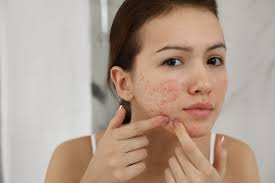
Following a cleanser, use a toner
Apply a toner to your entire face after you’ve washed, exfoliated, or used a face mask. Toners aim to constrict pores, making it less difficult for dirt and oil to become stuck there. Purchase acne toners at your neighborhood pharmacy, or apply witch hazel or apple cider vinegar with a cotton ball. After using a toner, let it on your skin without rinsing it off. How to be a Medical Doctor(Step-and Requirements)
Reduce stress
It is unclear exactly how stress and acne are related. You might also be more likely to pick at areas of your face when you’re under stress. By spreading bacteria, touching or picking your skin excessively can worsen acne.
Stress-related hormone release may increase sebum production and inflammation, aggravating acne. More research is required, however, some relaxation and stress-reduction techniques may improve acne.
- get more sleep
- deepen your breathing
- exercise yoga
- meditate
- Do some sort of physical activity
Unwind your entire being Give yourself some time to unwind because stress causes an increase in sebum production that will benefit both your mind and your skin. Watch your skin change as a result of having a relaxing bath, reading a book, meditating, or doing yoga.
Eat a balanced diet
The amount of acne in your body is significantly increased by highly processed foods and foods that are heavy in oils. Your skin regenerates more quickly and lessens unneeded oil production when you consume the right quantity of nutrients from whole grains, fruits, vegetables, and protein. Avoid processed foods and foods high in sugar whenever you can (think junk foods).
- Acne can be worse by a sugary diet. Avoid foods and beverages with a lot of sugar, such as sweets, ice cream, dairy desserts, and baked goods.
Read Also: How To Build Self-Esteem
Get plenty of water
Water plays a very essential part in our lives.
Although it’s common knowledge that you should drink eight glasses of water each day, there isn’t a recommended daily intake of water. Make sure to drink water frequently throughout the day to help your body and skin detoxify.
Use makeup devoid of oils
If you apply cosmetics, you can be caught in a vicious cycle where you cover up your acne while also contributing to it. Find an oil-free mineral makeup that fights acne to avoid making it worse while trying to conceal it. Furthermore advised is a strong foundation. However, avoid wearing any makeup at all if at all feasible because it clogs your pores throughout the day.
- Makeup brushes should be cleaned frequently to stop bacterial growth.
When to see a doctor
To get relief, people with moderate to severe acne should consult a professional. There are acne treatments with a prescription.
If any of the following apply, it might be time to consult a dermatologist for advice:
- Tried everything, but it doesn’t appear to be working.
- Have outbreaks that come and go repeatedly
- Acquire acne on your thighs or upper arms, for example
- Possess deep, painful acne on their skin
- Have persistent outbreaks that last for years
- Having acne that interferes with your social life, self-esteem, and confidence
- Suspect the new medication you’re taking may be the cause of your acne’s dark patches
It may be beneficial to see a doctor frequently, even if you only have a minor case of acne, to monitor how your skin responds to therapy.
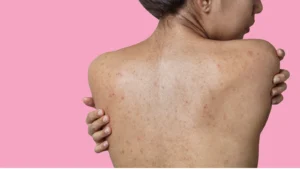
Conclusion
The inflammatory dermatosis known as acne is still highly widespread and frequently accompanied by severe psychological morbidity. Young adults are usually affected at a period when their physical, emotional, and social development is at its peak. Nowadays, adult acne that develops late and persists may call for additional treatment options to be considered. For all patients, early aggressive action is essential to minimizing the potential physical and psychological scars that acne of any severity can cause.
Read Also: How to Stay Focused (Steps and Requirements)
FAQs & Answers
How quickly do at-home acne remedies work?
Give therapy for acne for at least 4 weeks to take effect. A new breakout can also be brought on by using a different product every few days and irritating your skin.
Are acne home treatments effective?
The use of natural therapies is popular. Although the majority of home remedies for acne have not been proven to be clinically beneficial, they are nevertheless a possibility for treatment. But if you have severe acne, you might want to see a specialist.
How can you get rid of acne scars?
Scars from acne don’t naturally disappear. However, office procedures like fillers, microdermabrasion, micro-needling, resurfacing, and lasers can help them look better.
Acne scarring can also be less noticeable with routine exfoliation and natural treatments like apple cider vinegar.

